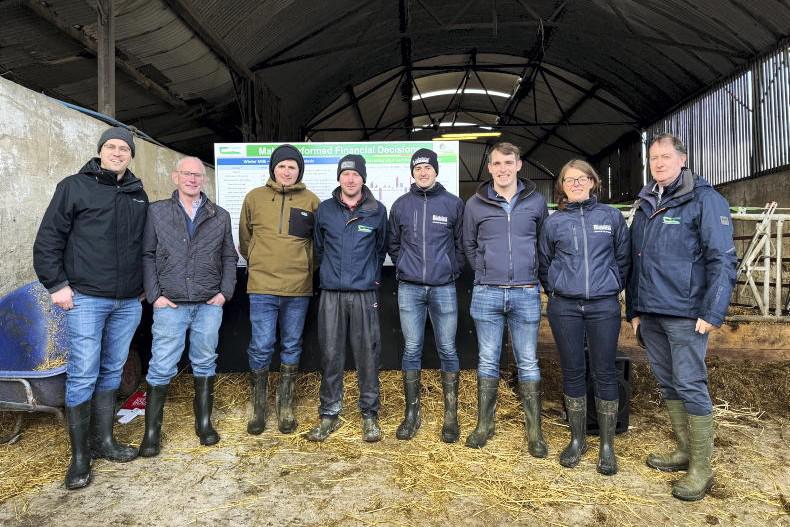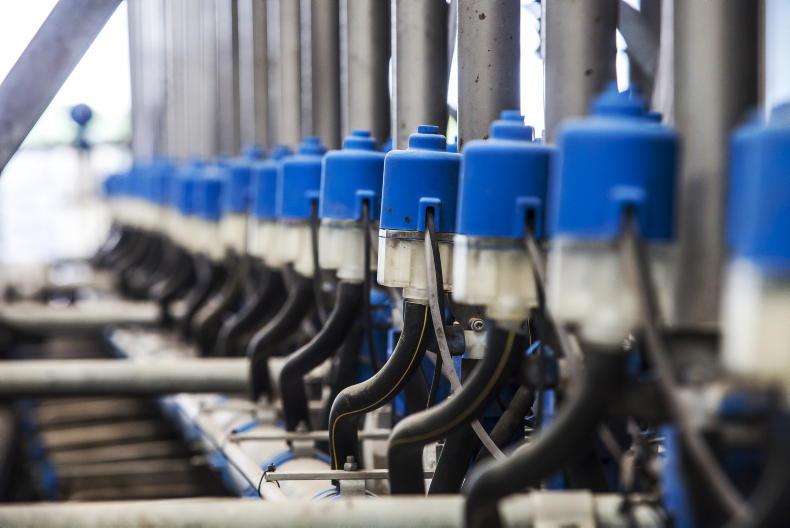As everyone in Ireland tucks into their cornflakes on Christmas Day morning, spare a thought for the poor winter milk dairy farmer who was up and milking cows not long after Santa left Irish airspace.
Only a small proportion of dairy farmers in Ireland still calve cows in the autumn/winter period. At the last count, there were just over 1,300 dairy farmers involved in liquid milk production out of a total of 17,500 dairy farmers.
These farmers are called winter milk, liquid milk or fresh milk producers, because they produce milk over the winter period – milk for drinking, yoghurt, ice-cream, etc.
Dairy farmers involved solely in spring milk production are referred to as manufacturing or creamery milk suppliers. Their milk is used to make long shelf life products such as cheese, butter, infant milk formula, etc.
They calve all their cows in the spring and dry off all their cows in late winter, so generally speaking, most get to have Christmas and all of January off where they don’t have to milk cows.
Why do they do it?
So why do liquid milk farmers do it? Is it a labour of love or is there a big bucket of money to be made in producing milk over the winter?
On the face of it, liquid milk farmers do get more money for producing milk over the winter, with most co-ops and milk processors paying an additional 3c/l or 4c/l over and above the prevailing milk price for milk produced over the winter.
To be clear, most farmers only get this bonus on what milk they have in a liquid milk contract, so if they produce more than this, they’ll still only get the bonus on the contracted supply.
The reason for the bonus payments is to incentivise farmers to produce milk over the winter and to help compensate farmers for the extra costs involved in liquid milk.
These extra costs are the core of the issue when it comes to winter milk production. If you think about it, in the summertime cows mainly eat grazed grass and a bit of meal in the winter.
However, they can’t graze grass in the wintertime, so farmers have no choice but to feed them silage and keep them in the shed.
That means they need to have a good shed with good facilities in order for cows to achieve their optimal production over the winter and go back in-calf.
The sheds needs to be kept really clean because cows are producing milk and so are at a greater risk of picking up mastitis, unlike a dry cow in a shed.
Extra work
All of this means that it takes extra time and labour to clean the sheds after each milking and it also means that extra bedding and cleaning products are needed, such as lime, sawdust, peat bedding etc.
Farmers also need to feed additional feeds over the winter. Grazed grass is an extraordinarily good feed for dairy cows, as it is high in energy and protein and relatively cheap to grow.
Silage, no matter how good it is, just is not as good as fresh grass. In order to compensate for this, farmers feed extra meal and higher protein meal, which is even more expensive.
Many winter milk farmers will also feed other forages such as chopped beet, maize or wholecrop wheat in order to increase the energy levels in the diet.
These additional feeds come at a cost in terms of growing them and then feeding them out, such as capital expenditure on silage pits, storage facilities, diet feeders and so on. This increases machinery running costs.
Because of all these additional costs and additional workload, most liquid milk farmers agree that the bonus is actually insufficient to cover the full costs.
As a result, the number of farmers involved in liquid milk continues to decline annually. The co-ops say they can’t afford to pay any more for the milk, because according to them, the shops won’t pay them any more for milk.
They are not wrong. The retailers hold the balance of power and don’t want consumers to pay more for milk for fear that they will shop elsewhere.
Unfortunately, there is no big pot of money in liquid milk and Teagasc analysis regularly shows that spring milk producers make more money than liquid milk producers.
So, before you pour the cream over the Christmas pudding, make sure and say a big thank you to our liquid milk producers for their dedication to producing milk over the winter.









SHARING OPTIONS